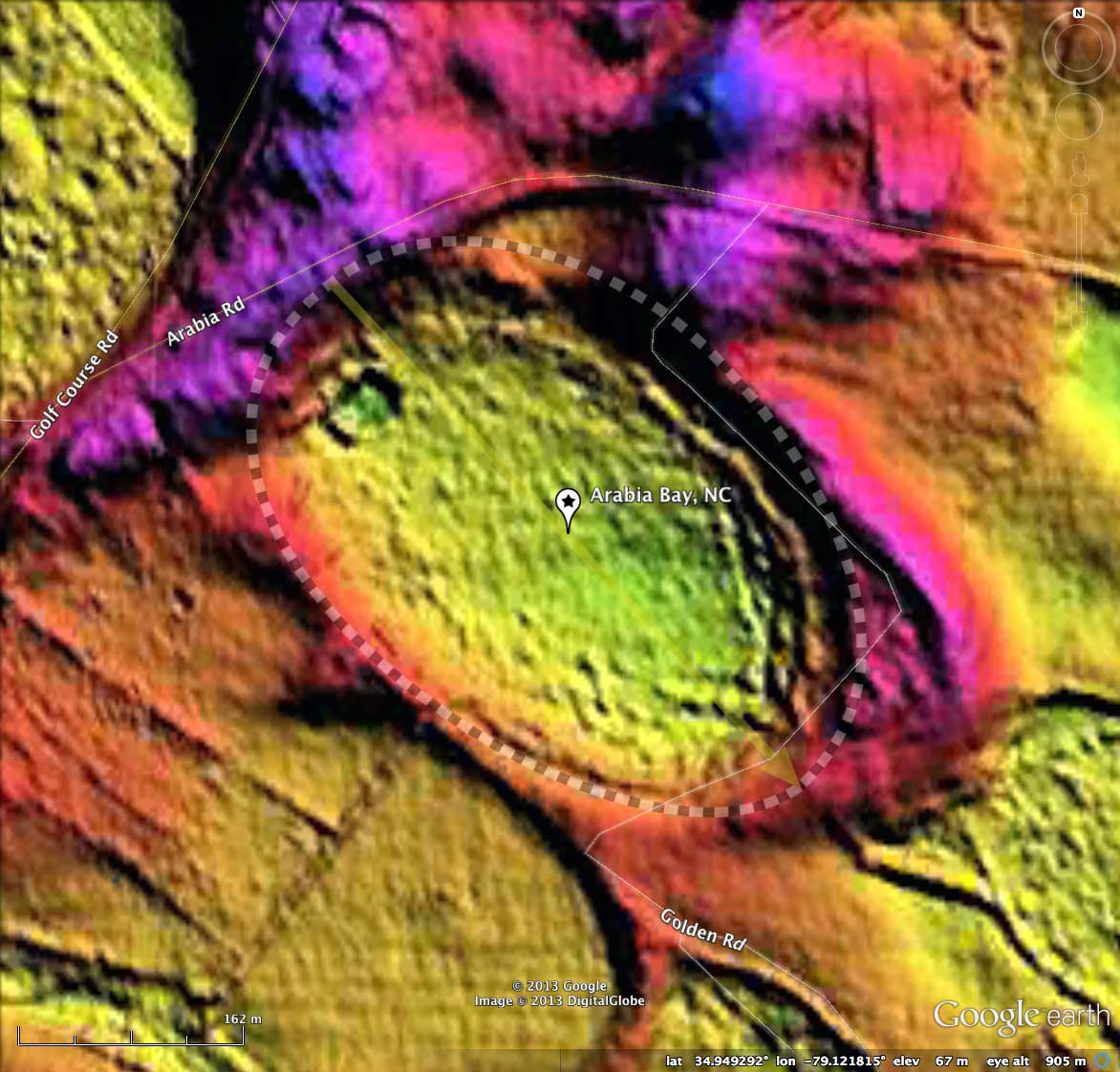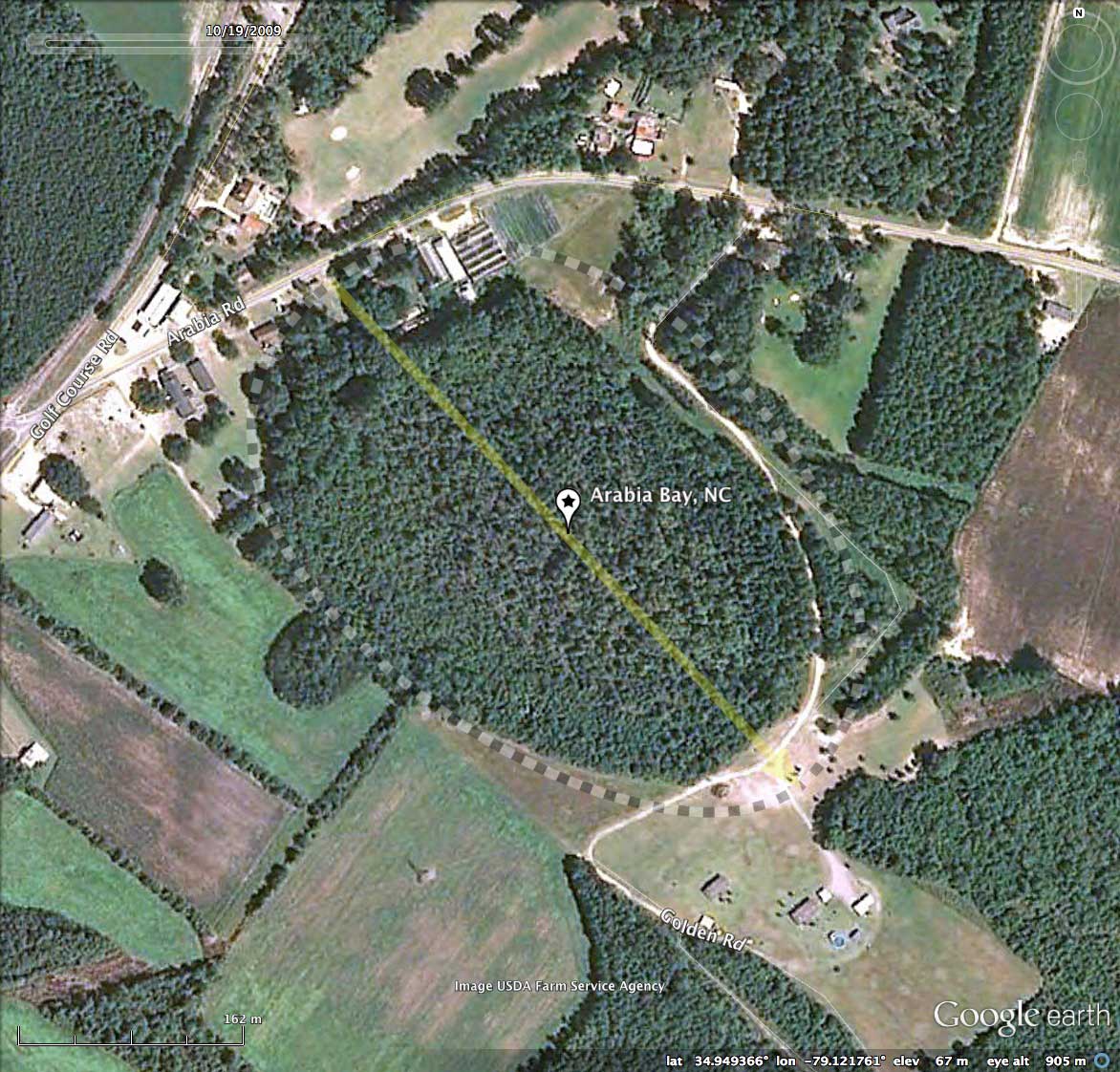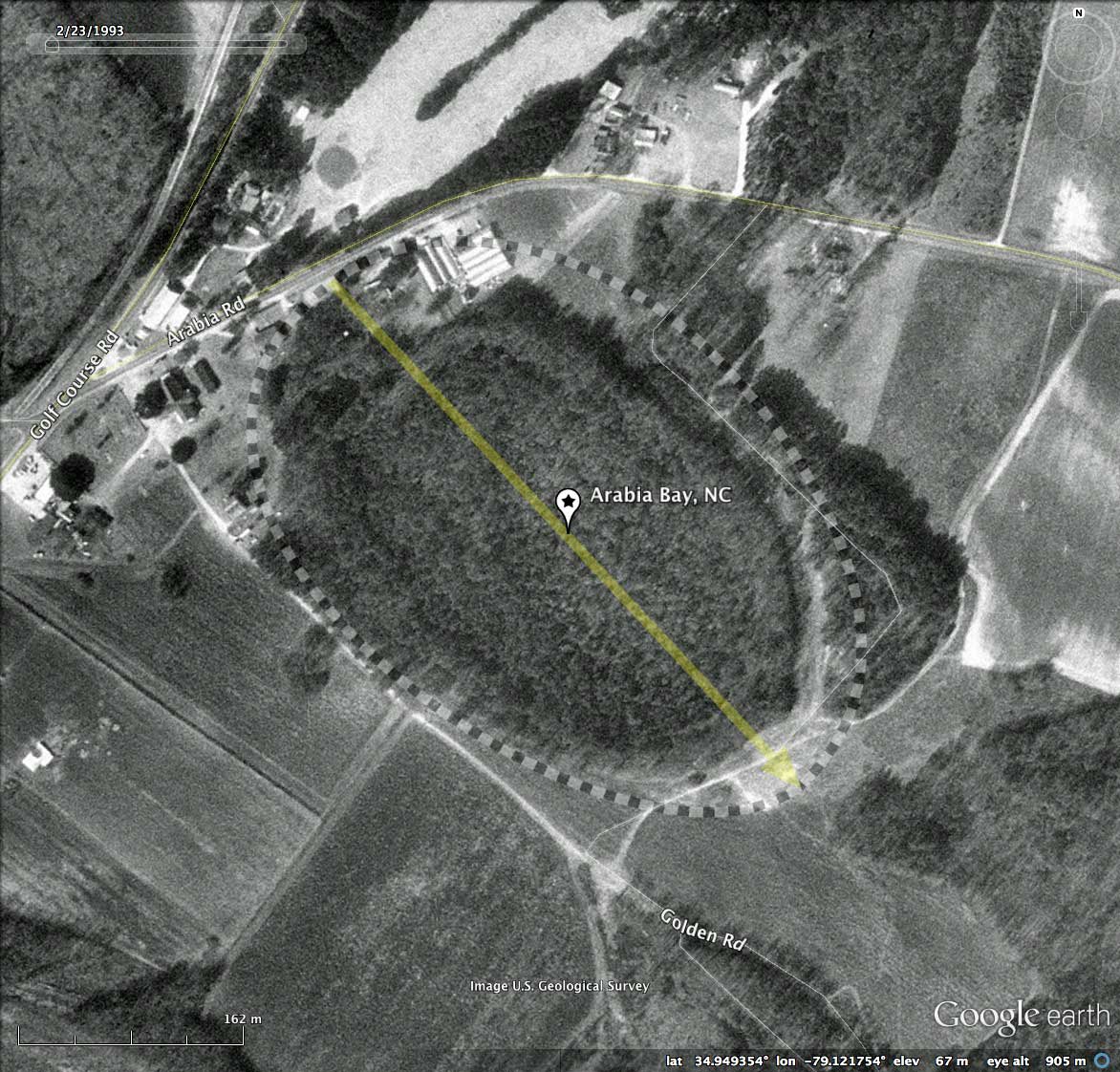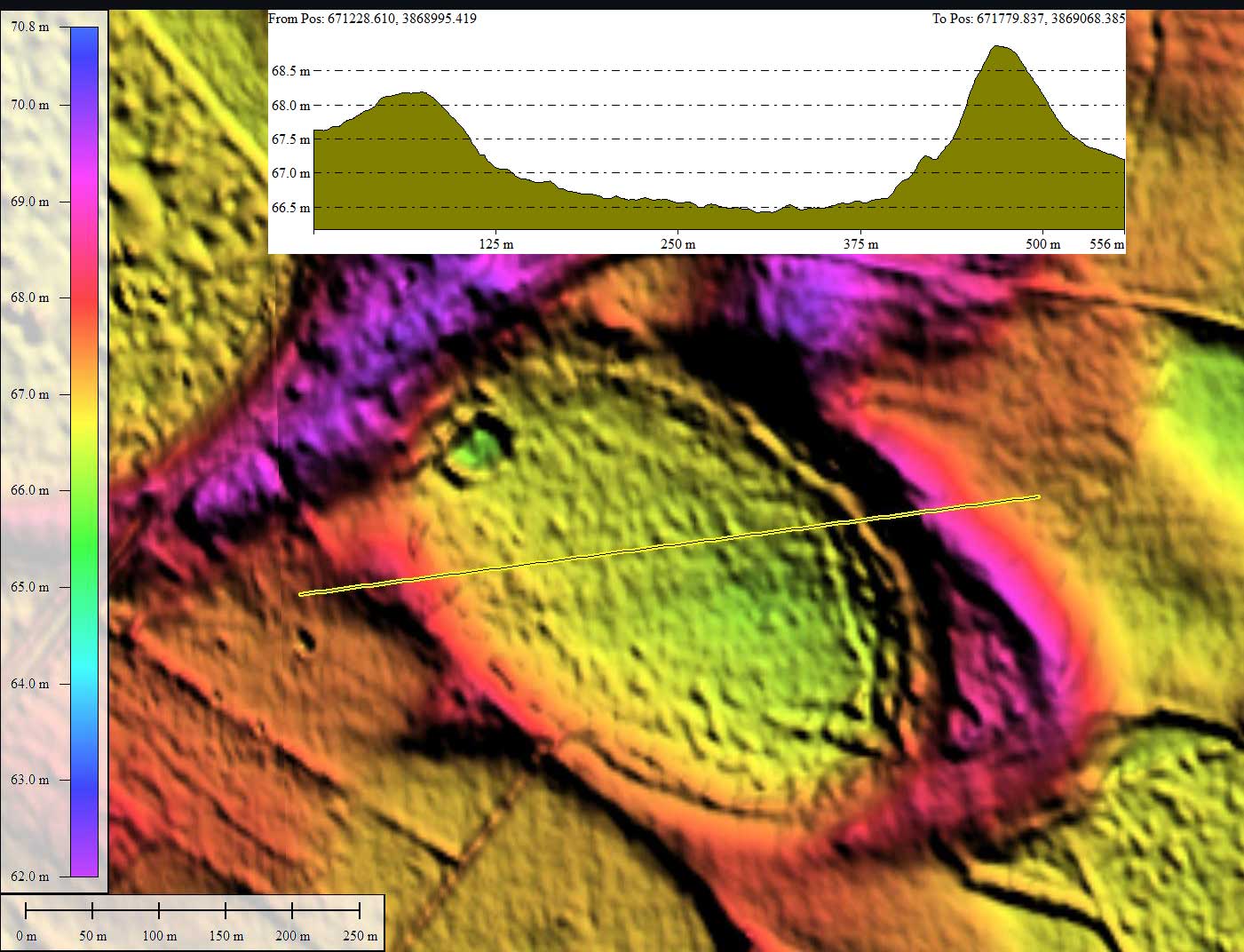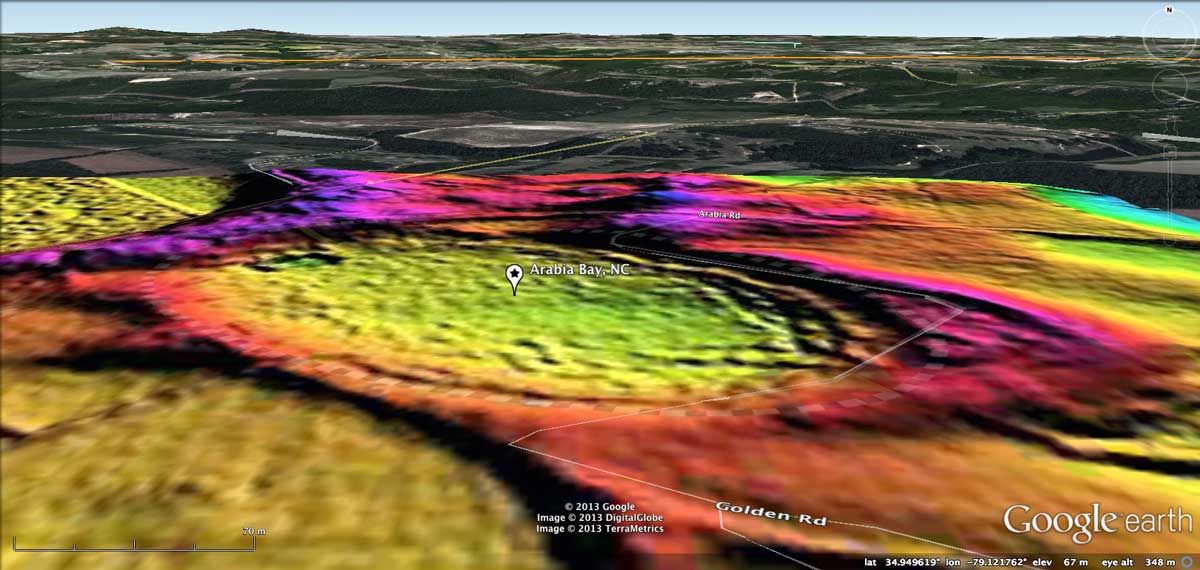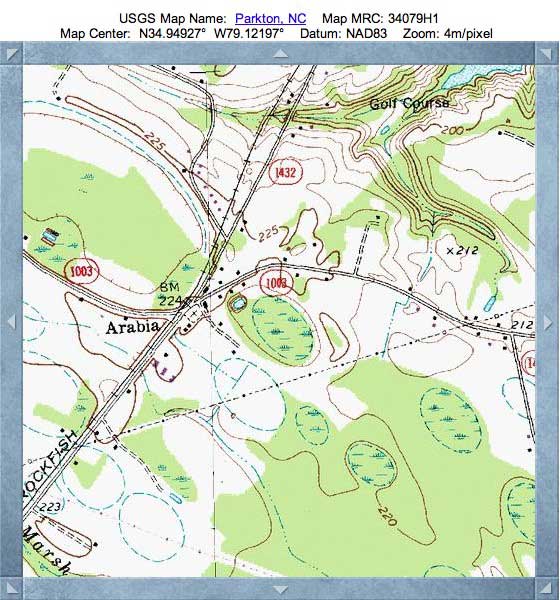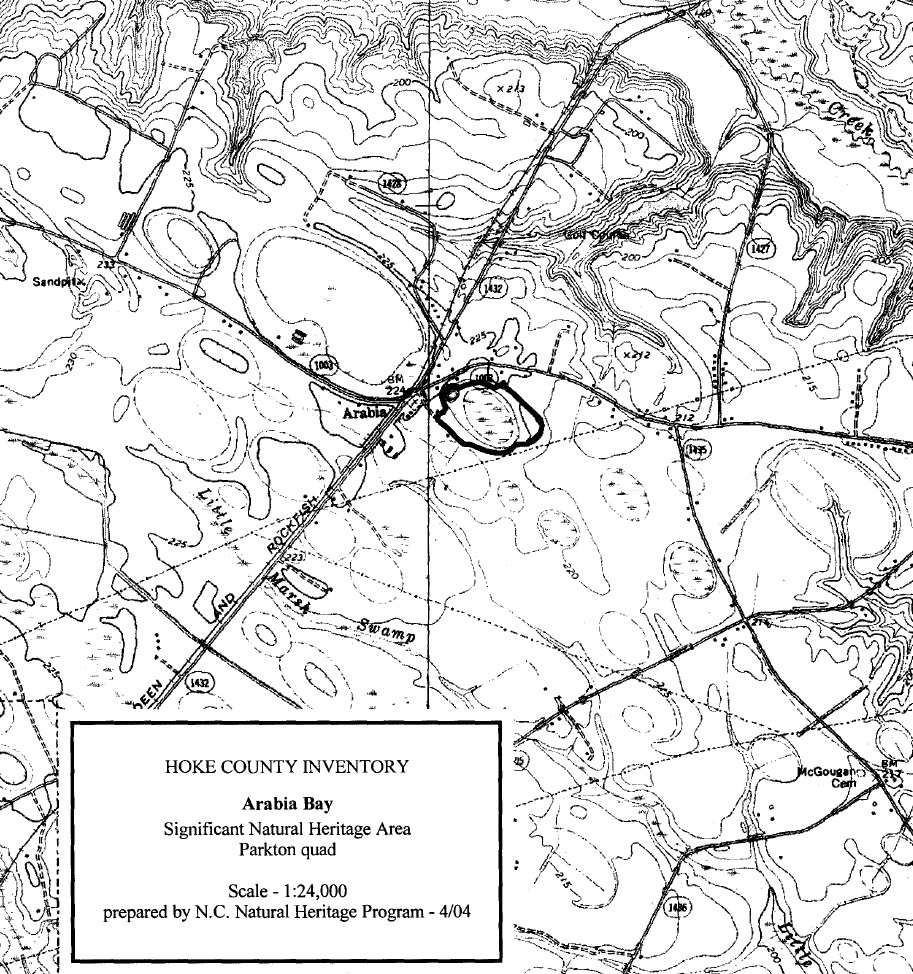Arabia Bay, NC
Arabia Bay is located ~10 kilometers ESE of Raeford, NC. The bay conforms well to the bayCarolina archetype in shape, and has an orientation similar to numerous nearby bays. The LiDAR finds no artificial drainage out through the bay rim, but a 30m x 40m collection basin has been dug in the northwest end. The bay is primarily under forest cover, with the exception for a small area of the northern quadrant that has been cleared for use in a plant nursery operation.
Here is an excerpt from Timothy Nifong's review of Arabia Bay in his The "Clay Subsoil" Carolina Bays of North Carolina.
This bay represents a relatively high quality savannah site, a result of frequent fires and other natural or artificial controls of invading successional woody species. A number of old growth pond cypresses (Taxodium ascendens) and suamp black gums (Nyssa sylvatica var. biflora) occur here.
In his paper, Nifong gave Arabia Bay 15 points out of a possible 20, and rated the bay one of none "B" Priority bays for restoration efforts. ( the report only listed four bays in the "A" list). The report can be retrieved from this LINK.
The Hoke County Natural Area Inventory (2004) also documented Arabia Bay. This paper, commissioned by the North Carolina Natural Heritage Program, was written by Bruce Sorrie. Sorrie's topographic map, identifying the location of Arabia Bay, is included in the album here. Here are some of his comments:
Here is an excerpt from Timothy Nifong's review of Arabia Bay in his The "Clay Subsoil" Carolina Bays of North Carolina.
This bay represents a relatively high quality savannah site, a result of frequent fires and other natural or artificial controls of invading successional woody species. A number of old growth pond cypresses (Taxodium ascendens) and suamp black gums (Nyssa sylvatica var. biflora) occur here.
In his paper, Nifong gave Arabia Bay 15 points out of a possible 20, and rated the bay one of none "B" Priority bays for restoration efforts. ( the report only listed four bays in the "A" list). The report can be retrieved from this LINK.
The Hoke County Natural Area Inventory (2004) also documented Arabia Bay. This paper, commissioned by the North Carolina Natural Heritage Program, was written by Bruce Sorrie. Sorrie's topographic map, identifying the location of Arabia Bay, is included in the album here. Here are some of his comments:
Ideally, conservation efforts should focus on those areas that are the most ecologically significant… In Hoke County, the highest priority area outside of Fort Bragg Military Reservation is the nationally significant Antioch Bay and neighboring Dial Bay/Plum Thicket… Today, the extreme rarity of clay-based Carolina bays makes it imperative to protect as many as possible, even if they require considerable restoration effort. Arabia, Blueberry, Hidden, and Titi Bays are excellent candidates.
Arabia Bay has a good quality example of a rare community type, Cypress Savanna, with an excellent herbaceous component. It supports populations of three rare plant species, one of which is awned meadow-beauty (Rhexia aristosa), a Federal Species of Concern. The bay also serves as a breeding site for amphibians and a feeding area for songbirds and wood ducks.
The bay needs active management to reduce the density of sweetgums. Opening the canopy will maintain herbaceous growth and promote reproduction of the rare species. An occasional prescribed burn will also promote herbaceous plants and suppress sweetgums and pines. Currently the bay is not under conservation protection.
Bruce Sorrie, 2004
Excerpts from the two papers mention above are available in a PDF, which can be retrieved HERE.
The Carolina Bay Survey has identified and measured over 1600 bays in _Octant 139316_. Their location and metrics can be referenced through a Fusion Table spatial visualization: http://cintos.org/FusionMap/139316.html
The Carolina Bay Survey has identified and measured over 1600 bays in _Octant 139316_. Their location and metrics can be referenced through a Fusion Table spatial visualization: http://cintos.org/FusionMap/139316.html
- Index #: 139316_7948
- Location: 34.94914861913368,-79.1217425095853
- Major: 0.5 km . . . Minor: 0.33 km
- Eccentricity: 0.743
- Area: 13.29 hectares
- Bearing: 137.2º
- Elevation: 66.47 m
- Archetype: bay_prototype
- Effective Diameter: 411.355 m
Copyright 2018 by Michael Davias
